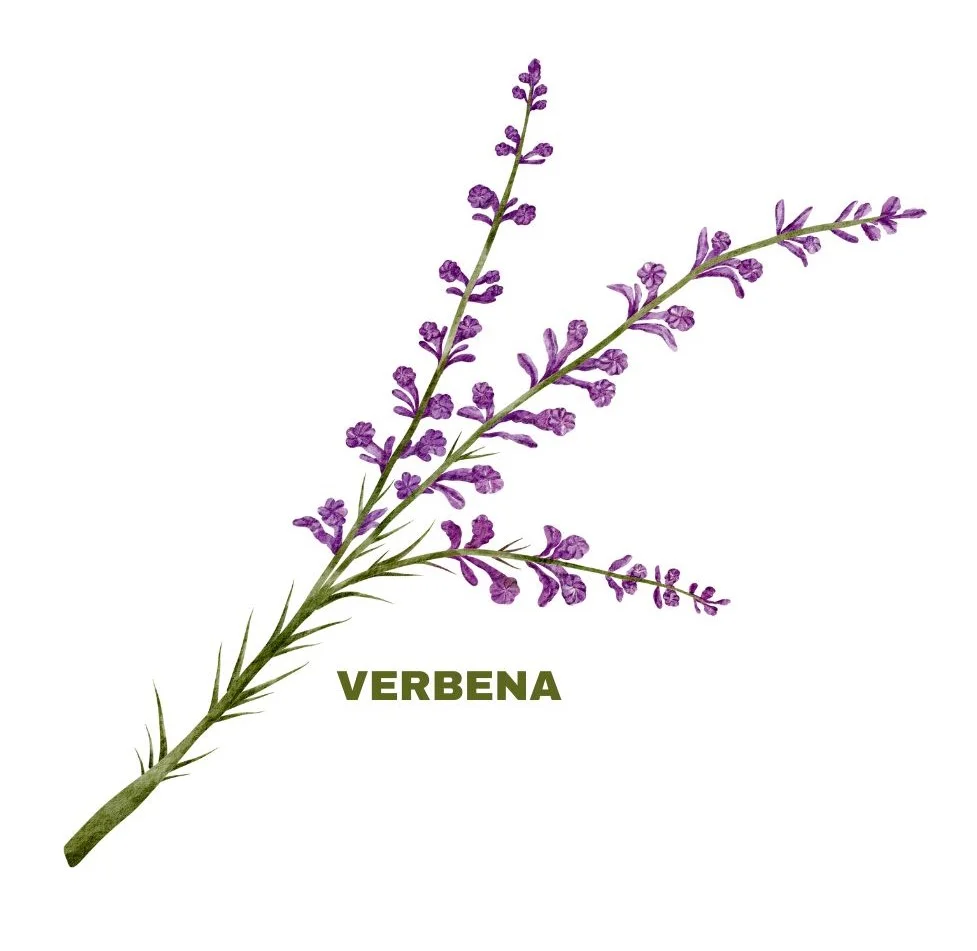Verbena/Blue Vervain, scientifically known as Verbena, is a medicinal herb renowned for its effects on the skin and nervous system.
With a history dating back centuries, it has been traditionally used to address various ailments ranging from nervous depression to skin conditions.
This versatile herb is valued for its ability to alleviate pain, promote blood absorption, and provide relief in conditions like epilepsy and insomnia.

Table of Contents
ToggleSOURCE INFORMATION
Scientific Classification
- Kingdom: Plantae
- Phylum: Angiosperms
- Class: Eudicots
- Order: Lamiales
- Family: Verbenaceae
- Genus: Verbena
- Species: Verbena officinalis
Origin
- Blue Vervain, scientifically known as Verbena officinalis, is a perennial herbaceous plant belonging to the Verbenaceae family.
- It is native to Europe, North Africa, and Asia but has also been naturalized in other parts of the world, including North America.
- Blue Vervain typically grows in moist meadows, along riverbanks, and in other damp habitats, preferring areas with full sun or partial shade.
Historical Facts
- Blue Vervain has a rich history of medicinal use dating back centuries. Ancient civilizations, including the Greeks and Romans, valued Blue Vervain for its therapeutic properties.
- In traditional Native American medicine, Blue Vervain was used to treat a variety of ailments, including fevers, headaches, and respiratory conditions.
- The botanical name “Verbena” is derived from the Latin word “verbenae,” which refers to plants used in religious rituals and ceremonies.
- Blue Vervain has been mentioned in various historical texts and herbal pharmacopeia throughout history, highlighting its importance as a medicinal herb.
- Over time, Blue Vervain has also found its way into modern herbal medicine practices, where it continues to be used for its beneficial effects on the nervous system, skin, and overall health.
DRUG PATHOGENESIS
- Blue Vervain primarily affects the skin and nervous system.
- It is known for its ability to address nervous depression, weakness, irritation, and spasms.
- Additionally, it promotes the absorption of blood, alleviates pain in bruises, and is effective in conditions like vesicular erysipelas and passive congestion.
- It is also indicated for intermittent fever and is considered one of the remedies for Poison-oak.
- In neurological conditions like epilepsy and insomnia, Blue Vervain brightens the patient’s mental powers and aids in relieving constipation.
KEY CHARACTERISTICS
- Affection for the skin and nervous system.
- Addresses nervous depression, weakness, irritation, and spasms.
- Promotes blood absorption and alleviates pain in bruises.
- Effective in conditions like vesicular erysipelas and passive congestion.
- Useful in treating intermittent fever and Poison-oak.
- Beneficial in epilepsy and insomnia, improving mental faculties and relieving constipation.
ORGAN SYMPTOMS
- Skin: Effective in vesicular erysipelas and bruises.
- Nervous System: Addresses nervous depression, weakness, and spasms.
- Fever: Indicated in intermittent fever.
- Neurological Conditions: Useful in epilepsy and insomnia, particularly in relieving constipation associated with these conditions.
MODALITIES
- Blue Vervain is typically administered in the form of a single dose of the tincture. In conditions like epilepsy, it may need to be continued for an extended period.
- Verbena tea is used as a diuretic drink to aid elimination in tubercular therapy by Vannier (Paris).
WHAT ARE MODALITIES IN HOMOEOPATHY?
DOSE
- Single dose of the tincture is typically recommended. In epilepsy, long-term use may be necessary for optimal results.
Frequently Asked Questions
What is Blue Vervain commonly used for?
- Blue Vervain is used to address a range of conditions, including nervous depression, weakness, irritation, spasms, bruises, vesicular erysipelas, intermittent fever, epilepsy, and insomnia.
How is Blue Vervain administered?
- Blue Vervain is usually administered in the form of a single dose of the tincture. In epilepsy, it may need to be continued for an extended period for maximum efficacy.
Is Blue Vervain safe to use with other medications?
- Blue Vervain does not have specific known interactions with other drugs. However, it is always advisable to consult with a healthcare professional before starting any new herbal remedy.
Meaning of Difficult Words
- Perennial: A plant that lives for more than two years, typically regrowing each spring.
- Herbaceous: A non-woody plant with soft stems that die back at the end of the growing season.
- Therapeutic: Having healing or medicinal properties.
- Pharmacopeia: A book or manual containing a list of medicinal drugs with their descriptions, preparations, and use.
- Botanical: Relating to plants or plant life.
- Naturalized: To introduce and establish a foreign plant or animal species in a new environment where it becomes established and reproduces.
- Erysipelas: A bacterial skin infection characterized by redness, swelling, and fever.
- Spasms: Sudden, involuntary muscle contractions or convulsions.
- Diuretic: A substance that promotes the production of urine, often used to treat conditions like oedema and hypertension.
- Tincture: A medicinal substance dissolved in alcohol or another solvent.
